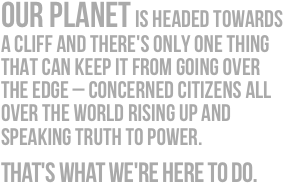This is an incomplete post salvaged from the internet archive.
-by Michael
A handful of people sat on black and maroon chairs, legs crossed, pens in hand. They were at the US side event on how the US is doing almost nothing in Africa considering they are the world’s superpower, but that almost nothing should be paid more attention to than the total lack of federal initiative domestically. Paula Dobriansky, US Undersecretary of State for Democracy and Global Affairs, opened the act. “We, the US, are doing lots of things to combat climate change,” she said, “in fact we are the leader, once again.” To the dissapointment of the crowd, she did not smile while she lied. “Doing lots in Africa,” she continued, “We’ve trained hundreds of thousands of teachers, given tens of thousands of girls scholarships, and distributed over two million books to children, all in Af-ree-kah.” The crowd, it so turned out, was mostly of African origin. Thus it surprised me that no one seemed to glitter at the mention of these statistics. Then Paula mentioned something that made me heart vomit with concern. “We are introducing new agricultural technologies to rural African communities,” said Paula. “Oh no!” I thought. I was afraid that by this she meant the USA was going into those communities and distributing nitrates, green revolution style high yield crops, and GMOs. But I had no time to dwell on these fears, as Paula was simply saying some impressive things before her colleagues gave the real presentations.


